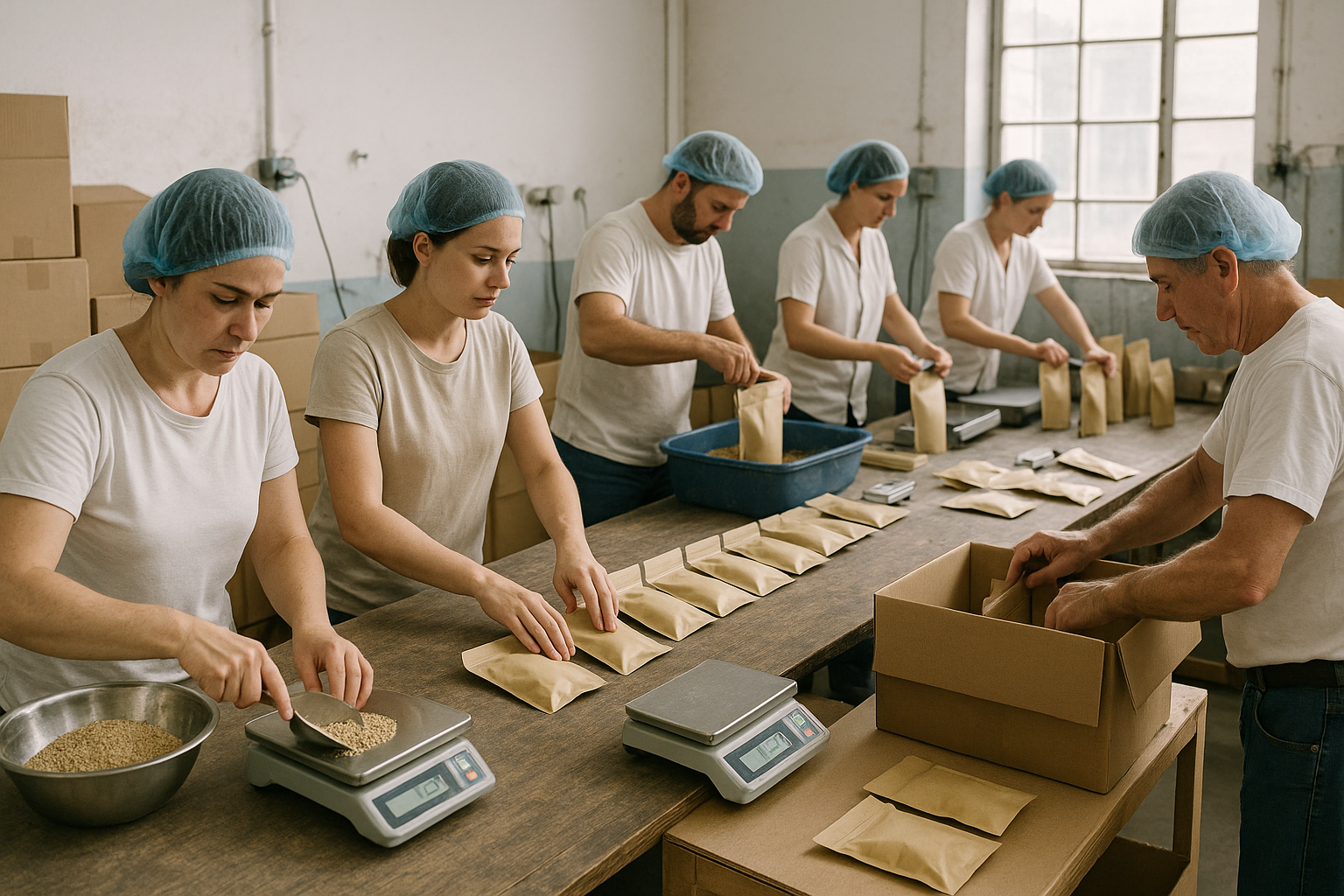Opening Scene: The Chaos of Manual Packaging
A typical Industrial 1.0 packaging workshop might look like this:
- One or two workers weighing products manually using scoops and small electronic scales.
- Another worker neatly aligning each product for bagging.
- Two to three workers opening bags, filling, sealing, and trying not to spill a gram.
- One last worker boxing finished packages into cartons.

Does this sound familiar?
What seems like a flexible, low-tech workflow hides major costs: instability, inefficiency, and significant management overhead.
Problems with Manual Packaging: 3 Key Challenges
1. Labor Instability
Employees take leave, resign unexpectedly, need continuous training, or simply become fatigued and make mistakes. Even seasoned operators have off days. Every line stoppage costs money, erodes customer trust, and damages your brand.
2. High Error Rates
Manual handling often leads to inaccuracies, such as overfilling, underfilling, weak seals, or foreign objects ending up in bags—wasting materials and harming brand reputation.
3. Management Complexity
Every new worker multiplies complexity. Scheduling, training, quality control, and accountability become increasingly difficult. A single issue can disrupt the entire production line.
Our Solution: Practical Automation Tailored for Real Operations
Step 1: Automatic Feeding Systems
Whether handling fragile chips or bulky pet food, our Z-type bucket elevators, belt conveyors, or vibratory feeders ensure a stable, real-time product flow. These systems integrate seamlessly with multihead weighers, replacing 1–2 manual workers.
Step 2: Multihead Weigher Replaces Manual Weighing
Manual weighing typically achieves 10–15 bags/min. Our multihead weighers deliver consistent speeds of 60+ bags/min with accuracy within ±0.5–1%, significantly boosting productivity and reliability.
Step 3: Automatic Bagging & Sealing
After weighing, products are automatically packaged using a VFFS (vertical form-fill-seal) machine or a premade pouch packaging system. This includes bag forming/opening, filling, sealing, and optional labeling, supporting various pouch types (stand-up, zipper, spouted) with minimal adjustments.
Step 4: Disorderly Pouch Sorting (for Small Packages)
Small, filled pouches are automatically sorted for boxing. A task previously requiring multiple workers now runs smoothly and efficiently at speeds of 60–280+ bags/min.
Real Numbers: Is Automation Worth It?
Here’s a practical comparison between manual and automated packaging:
| Metric | Manual Line | Automated Line |
|---|---|---|
| Operators Required | 5 workers | 1 operator (monitor only) |
| Output | ~600–900 bags/hour | 1,500–3,000 bags/hour |
| Error Rate | 3–5% | <1% |
| Monthly Labor Cost | ~¥50,000+ | ~¥6,000 |
| ROI Payback Period | – | ~6–12 months |
Final Word: Automation is an Investment, Manual Labor is an Expense
Investing in automation isn’t about eliminating workers—it’s about maximizing your team’s potential, simplifying management, and creating a dependable production environment.
At Fill Package, we don’t just provide machines; we build packaging solutions that consistently deliver value and peace of mind.
“Automation is a clear investment, while manual labor quietly drains your resources every month.”

